The zombie subgenre has always been a reliable way to reflect the times. Whether they're slow and shambling or sprinting at full speed, zombies have evolved alongside the fears of the world that birthed them. What started as a low-budget metaphor for societal collapse has morphed into everything from slapstick comedies to slick blockbusters to intimate dramas. Their popularity has surged and dipped, but the living dead have always managed to crawl back into the pop culture spotlight, especially when the world begins to feel more unstable or uncertain. There’s something disturbingly comforting about a threat that’s mindless and inescapable - one that makes the collapse of order feel almost inevitable.
The release of 28 Years Later, the long-awaited third entry in Danny Boyle and Alex Garland’s iconic franchise, is a reminder of how powerful and versatile the zombie story can be. The film arrives in a time when undead media has started to fade again, and yet its return feels urgent, angry, and alive in all the right ways. To mark the occasion, we’re looking back at ten essential zombie movies - not just the gory greats or fan favorites, but the ones that moved the needle, changed the rules, or deepened the mythology. From Romero to rage-infected to international standouts, these are the films that defined the undead and reshaped what it means to survive the end.
Night of the Living Dead (1968)

The one that started it all. George A. Romero’s Night of the Living Dead didn’t invent zombies, but it did redefine them into the flesh-eating icons we know today. With a microbudget, a farmhouse setting, and a whole lot of nerve, Romero built a new kind of horror - one where the true monsters might be the people you’re stuck in the house with. The film was shocking in its brutality and revolutionary in its politics, with Duane Jones’ lead performance standing as one of the most significant in horror history.
By the time the credits roll, hope has rotted away, and the world is cruel and unjust, regardless of who’s undead and who’s not. The impact Night left on horror, and genre cinema at large, is immeasurable. It laid the groundwork for decades of zombie storytelling to come, including basically every other entry on this very list. Its grainy black-and-white footage, bleak tone, and no-nonsense pacing still hit hard today. What’s more, it proved that horror can be radical - capable of saying something urgent and provocative even while dealing with ghouls. Everything we think of as “classic zombie” began here.
28 Days Later (2002)
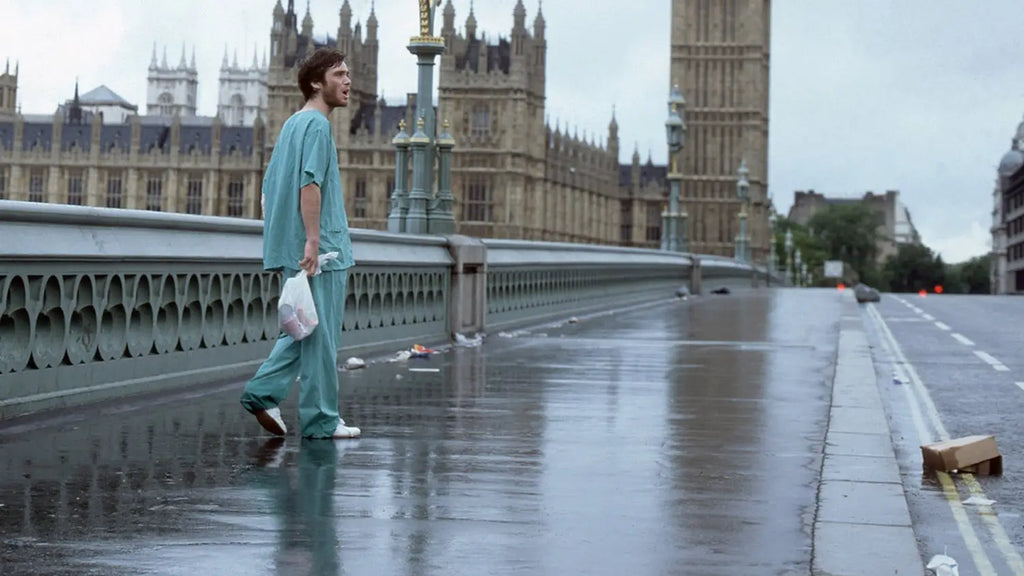
When 28 Days Later hit theaters in the early 2000s, the zombie genre was on life support. Then came this bolt of rage-fueled adrenaline, directed by Danny Boyle and written by Alex Garland, and suddenly the undead were terrifying again. Not technically zombies - these are living, infected humans driven mad by the Rage virus - the film still functions as a total reinvention of the genre. It’s a harrowing road movie with a post-apocalyptic London as its backdrop, captured in grainy DV footage that makes the horror feel all too real. Cillian Murphy’s Jim wakes up in a devastated world and must reckon with the remnants of humanity, including a third act that pivots to show how terrifying the uninfected can be when power goes unchecked.
The film balances nerve-shredding horror with quiet beauty and unexpected hope, redefining what a zombie movie could look and feel like. Its influence was immediate - 28 Days Later ushered in the modern era of fast zombies and grim, grounded apocalypse stories, paving the way for The Walking Dead, World War Z, The Last of Us, and countless others. It changed everything without ever needing to use the word “zombie” once.
Dawn of the Dead (1978 / 2004)
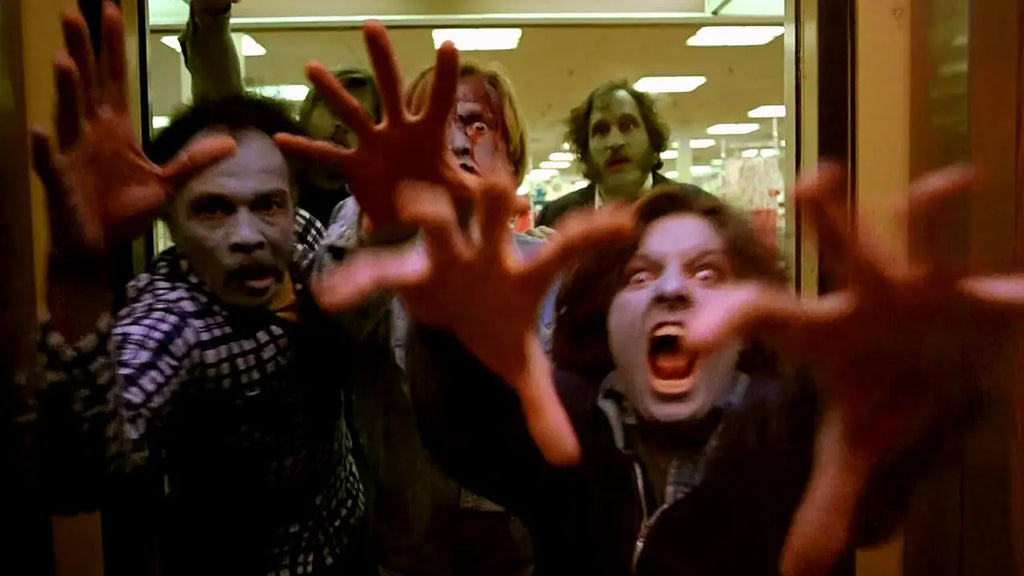
Few sequels elevate the original, but George A. Romero’s Dawn of the Dead did just that - bigger in scope, bloodier in execution, and bolder in its satire. Set mostly within the walls of a shopping mall, the 1978 classic skewers American consumerism with gleeful menace, turning the undead into metaphors for mindless capitalism. But it’s not just subtext - it’s a damn good zombie movie. The survivors’ struggle to carve out a new life among the relics of the old one is as compelling as the gory showdowns. It’s slower and more reflective than its predecessor, but no less biting. Romero crafted an apocalyptic epic with real soul.
Then, in 2004, Zack Snyder burst onto the scene with a reimagining that did things in its own, hyperviolent way. With a razor-sharp script from James Gunn, Snyder’s Dawn is a lean, mean adrenaline machine that keeps the dread flowing and the body count high. The action is visceral, the cast of characters is diverse and dynamic, and the tone walks the line between bleak and brash. While it sheds the political bite of the original, it injects pure terror and chaos into the formula. That opening credits sequence alone, set to Johnny Cash’s “The Man Comes Around,” is legendary. Taken together, both Dawn films represent two peaks of the genre - one contemplative and satirical, the other ferocious and visceral. You can’t talk zombies without them.
World War Z (2013)
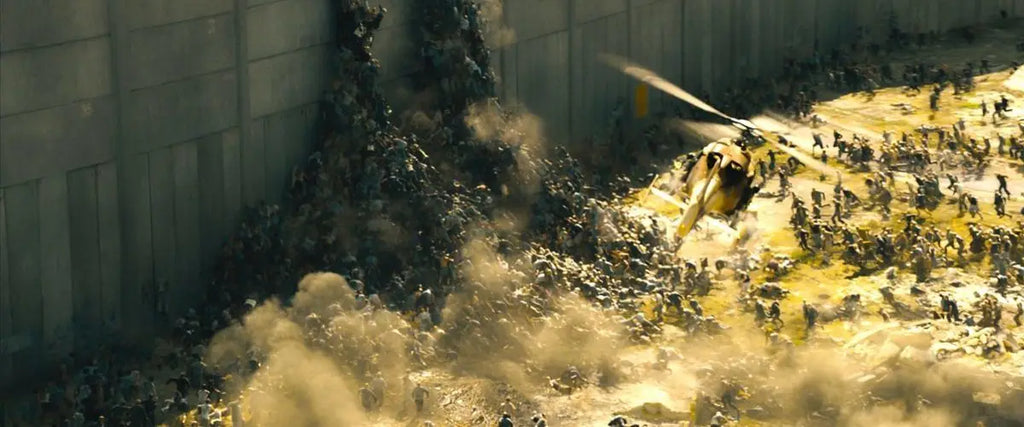
World War Z shouldn’t work as well as it does. Based loosely - very loosely - on Max Brooks’ beloved oral history novel, the film ditches the book’s anthology format in favor of an action-packed, Brad Pitt-led global adventure thriller. And yet, despite a famously troubled production, World War Z delivers some of the most jaw-dropping large-scale zombie set pieces ever put to film. The chaos in Philadelphia, the siege in Jerusalem, the nerve-wracking finale in a WHO lab - each sequence is distinct, intense, and terrifying. These are zombies as a natural disaster, swarming in insect-like waves and collapsing society in real time.
What sets World War Z apart is its sheer ambition. While many zombie stories focus on small groups of survivors, this one zooms out to show the worldwide impact of the outbreak. It’s a political thriller, a disaster movie, and a horror film all at once. Pitt’s character isn’t a soldier or a survivalist - he’s a former UN investigator trying to piece together the puzzle of the plague, bringing a different kind of protagonist to the genre. While purists might knock it for straying from the source or favoring PG-13 thrills, there’s no denying the scale and spectacle. It brought zombies back to the blockbuster level, and did it with far more intelligence than most give it credit for.
Shaun of the Dead (2004)

The best horror comedies don’t just spoof - they celebrate. Edgar Wright’s Shaun of the Dead is as much a heartfelt tribute to George Romero as it is a hilarious dissection of modern malaise. Simon Pegg stars as Shaun, a thirty-something everyman sleepwalking through life until the dead actually rise, forcing him to become the hero he never thought he could be. It’s a rom-com, a buddy movie, and a full-on zombie horror flick, all working in perfect harmony. The jokes land as hard as the emotional gut punches, and the film isn’t afraid to go dark when it needs to.
What makes Shaun endure is its deep love for the genre. Every frame is meticulously crafted, every gag carefully placed, and every scare earned. Wright’s kinetic direction and sharp editing elevate the film into something greater than parody - it’s a genuine entry into the canon. It asks the same questions as the best zombie stories: What does it take to truly live? How much of our lives are already undead routines? And when the world ends, who will you be standing next to? Shaun of the Dead is endlessly quotable, sneakily devastating, and one of the smartest horror comedies ever made.
Train to Busan (2016)
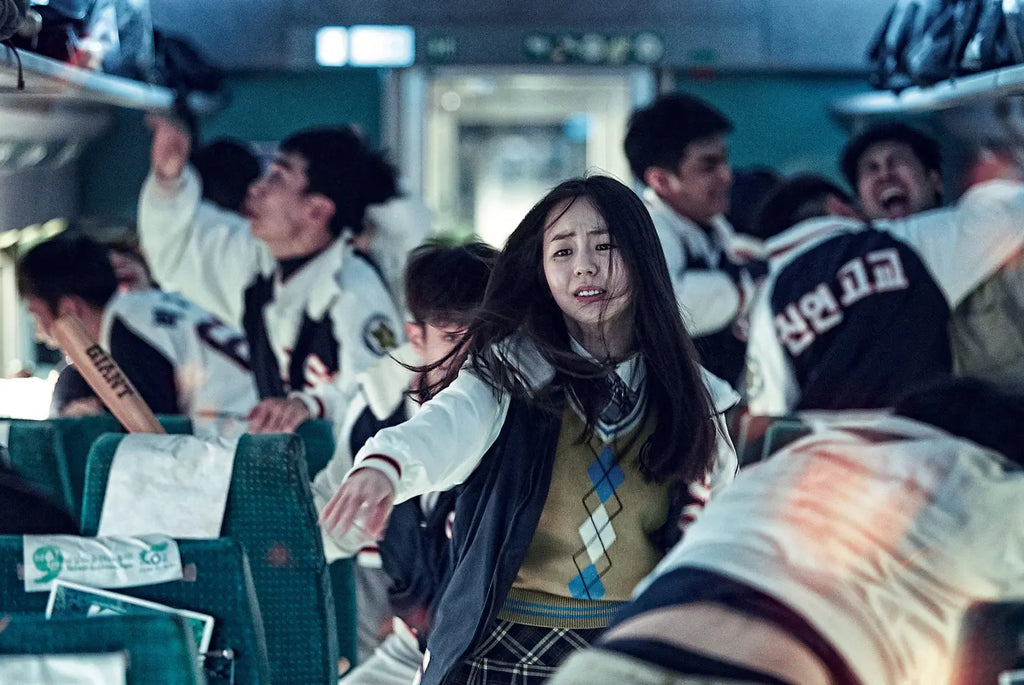
South Korea’s Train to Busan brought new energy to the genre just when it needed it. A runaway hit that balances breakneck action with gut-wrenching emotion, Yeon Sang-ho’s film is set almost entirely on a high-speed train during a sudden and vicious zombie outbreak. What starts as a survival thriller quickly becomes a powerful examination of class, sacrifice, and human connection. The tight quarters and unrelenting momentum make every sequence pulse with tension, and the zombies - fast, twitchy, and terrifying - are among the most physically intense ever put to screen.
But Train to Busan works just as well because of its characters. Gong Yoo’s emotionally distant father becomes the reluctant protector of his young daughter, and their journey from estranged to inseparable is the film’s beating heart. Supporting players like Ma Dong-seok’s fan-favorite Sang-hwa and the villainous business exec add layers of complexity and pathos to the story. Every sacrifice lands, every loss is felt. The film builds toward a finale that’s as emotionally crushing as it is thematically resonant. It’s not just one of the best zombie movies of the 2010s - it’s one of the best action-dramas of the decade, period.
Handling the Undead (2024)
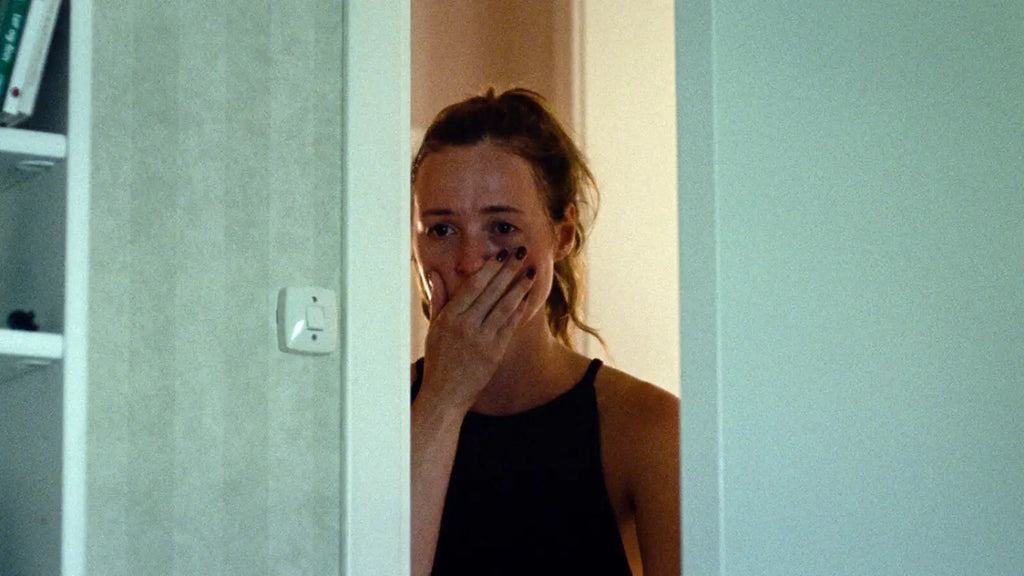
A recent but haunting addition to the zombie canon, Handling the Undead reimagines the undead not as ravenous monsters, but as silent, sorrowful anomalies. Directed by Thea Hvistendahl and adapted from John Ajvide Lindqvist’s novel (the same mind behind Let the Right One In), this Norwegian film is a slow, mournful meditation on grief and denial. The dead rise, yes - but they don’t really attack or eat or even move much. They simply…return. And what follows is a deeply human, profoundly unsettling portrait of how people might respond to the impossible being made real.
What makes Handling the Undead so powerful is its restraint. There are no jump scares or chaotic outbreaks here - just a cold, eerie stillness. The film lingers in its atmosphere, steeped in overcast skies and muted emotions, where characters must decide whether to accept or reject the unnatural presence of their loved ones. It repositions the zombie trope as an emotional metaphor rather than a physical threat. That’s not to say it isn’t terrifying - it absolutely is - but the horror here is existential. What do you do when your grief no longer has a grave? In a genre that so often focuses on survival, Handling the Undead dares to ask what comes after.
[REC] (2007)
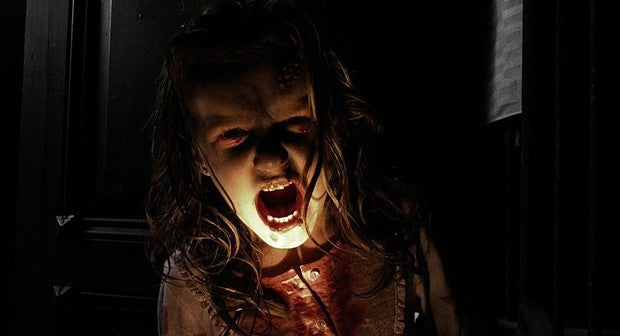
If 28 Days Later brought zombies back to theaters, [REC] brought them into your home and made you afraid to open the door. This Spanish found-footage masterpiece from Jaume Balagueró and Paco Plaza is one of the most terrifying zombie films ever made. Set in a quarantined apartment building during a late-night emergency, the movie follows a reporter and her cameraman who find themselves trapped as a mysterious infection spreads like wildfire. The handheld format immerses the viewer in the chaos, delivering some of the most claustrophobic and visceral horror of the 2000s.
The brilliance of [REC] lies in its escalating tension. Every floor climbed, every door opened reveals more dread, more screaming, more blood. And just when you think it’s peaked, the final act reveals a twist that veers sharply into demonic horror, adding a theological chill to the biological terror. The film doesn’t let up for a second, and its brief runtime only makes it feel more like a breathless backwards descent into hell. It was influential too - spawning sequels, an American remake (Quarantine), and a renewed interest in found-footage horror. If you’re looking for something that blends zombie panic with real-time terror, [REC] is a relentless classic.
I Am Legend (2007)
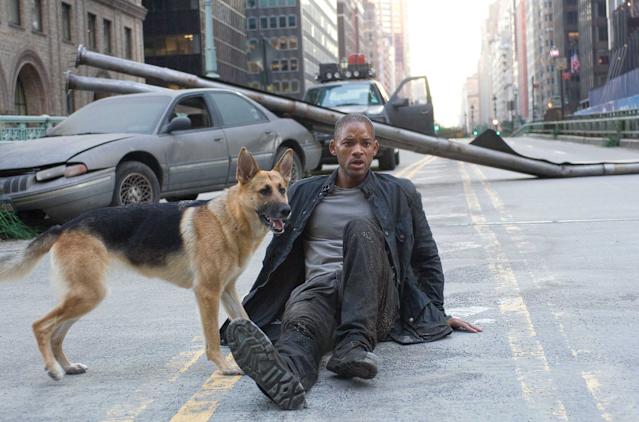
Though often debated as a “true” zombie film, I Am Legend earns its place on this list through sheer cultural impact and apocalyptic power. Loosely adapted from Richard Matheson’s 1954 novel, Francis Lawrence’s take stars Will Smith as the last man in New York City following a viral outbreak that’s wiped out humanity and turned the infected into vampiric, zombie-like creatures. It’s a one-man show for much of the film, anchored by Smith’s deeply human performance and the eerie beauty of a decaying metropolis reclaimed by nature.
What I Am Legend does best is isolate its horror. The loneliness is suffocating, the silence occasionally deafening, and the sudden eruptions of violence from the infected are shocking and brutal. The CGI may not have all aged gracefully, but the atmosphere and existential despair remain potent. The film also flirts with deeper themes - guilt, survival, and the shifting definition of what it means to be the “monster.” While its ending was softened for mainstream audiences (the alternate ending is far more in line with the novel), I Am Legend still stands as a major touchstone for post-9/11 horror. It’s bleak, bold, and unforgettable.
The Return of the Living Dead (1985)
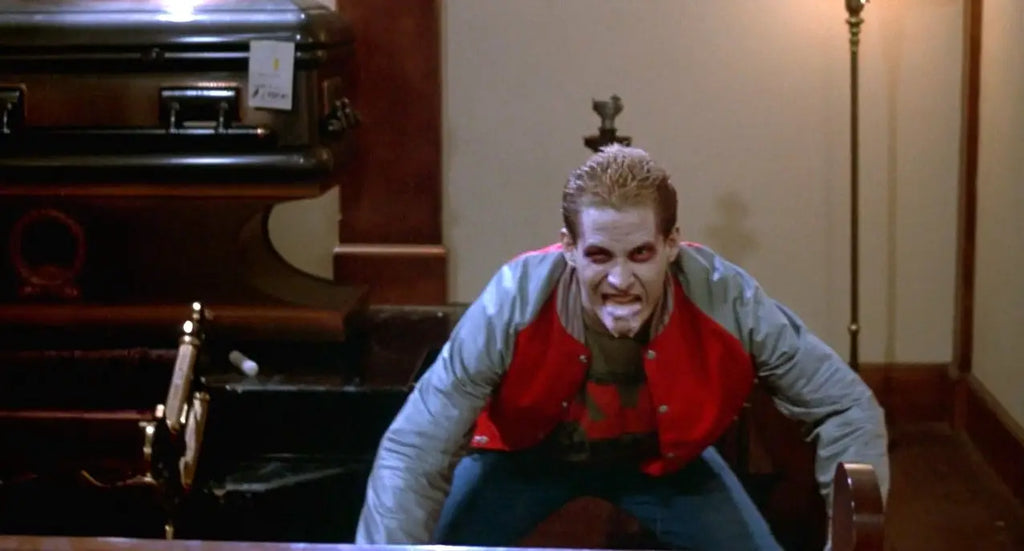
Where Romero went bleak and biting, The Return of the Living Dead went punk and unhinged. Directed by Dan O’Bannon, this unofficial offshoot of Romero’s zombie mythos took everything we knew about the undead and dialed it up to eleven. Fast-moving, brain-hungry, and impossible to kill, these zombies aren’t here to symbolize - they’re here to party. And scream. And rip your limbs off. Infused with black comedy, grisly effects, and a killer soundtrack, Return carved out its own bloody corner of the genre and became a cult legend in the process.
But for all its rockin’ camp and chaos, Return is also smart as hell. It riffs on the genre’s tropes with meta glee while still delivering some genuinely gnarly scares. The film wastes no time getting to the mayhem and keeps the momentum cranked up the entire ride. Its characters are punk rock archetypes - rowdy, rebellious, and mostly doomed - and the film treats their demise with a kind of gleeful nihilism that feels strangely refreshing. Most importantly, Return is responsible for introducing the idea that zombies eat brains - a now-iconic trait that was never part of Romero’s original lore. For fans of horror-comedy and practical effects wizardry, this one’s essential undead viewing.



